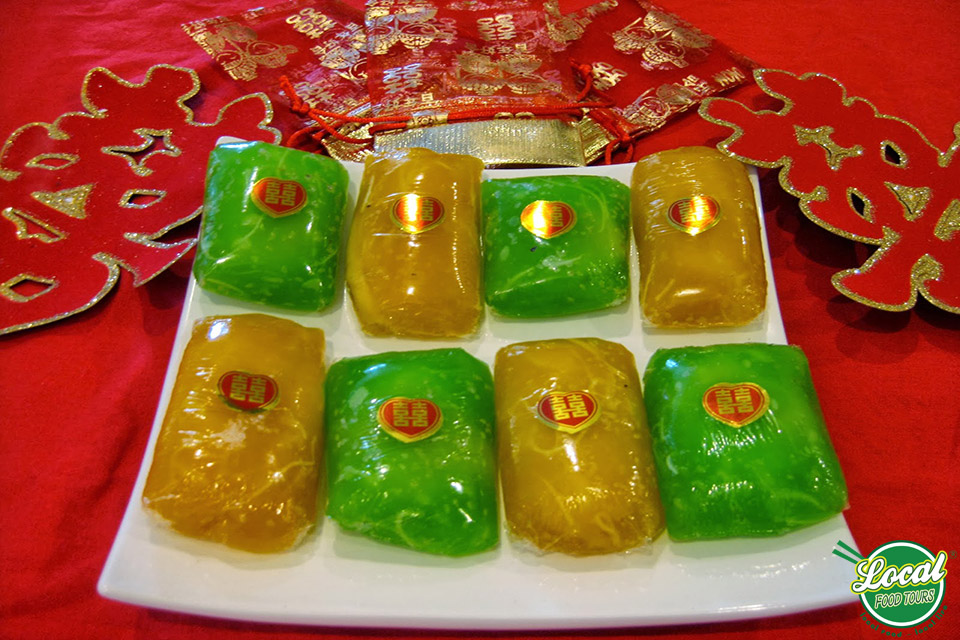If you have chance to go on a food tour in Hanoi, especially in the Old Quarter, you will be surprised by Hang Than Street that provides wedding offers. As a tradition of Hanoians, the wedding offers requested by the bride’s family must have Phu The Cake to symbolize and pray for the marriage with faithfulness.

Phu The Cake’s hometown and birth
Hang Than Street is the most well-known address to the fiancé couples who are preparing for their “hundred-year happiness”. The households on this street sell all the things of a wedding challenge, from dried tea, sugar coated lotus seeds, betel to green sticky rice and Phu The cake. Although it is thought to be a Hanoi traditional food displayed in the caskets of wedding offers, Phu The Cake originated in Dinh Bang village, Bac Ninh province.
An old story tells that in the village, there was a couple doing the business. One day, the husband went far away to engage in a trade; his wife make him the cake and said that despite living apart, her love for him would always be as sweet as the cake. The husband was touched and he named the cake Phu The cake (Husband and wife cake). However, when he was far away from home, the husband was captivated by the beauty of the strange girl and did not want to return. The wife knew that, then, she made the cakes and sent them to the husband. When receiving the cakes from his wife, the husband left the enticements of the new land behind and came back to his family. Since then, people have considered Phu The cake the symbol of the faithfulness between husband and wife.
The children in Dinh Bang village are often told another story. On the special occasions in Dinh Bang, the villagers used the crops they grew to make Su Se cake, the old name of Phu The cake. One year, when Dinh Bang villagers celebrated their village festival, Emperor Ly Thanh Tong together with his concubine Nguyen Phi Y Lan came to Den Do to burn incense to Emperor Ly Thai To and Ly Thai Tong. The villagers offered the emperor and his concubine Su Se cake. The emperor renamed the cake as Phu The cake due to the deliciousness and the meaning of the cake.
The way to make Phu The cake
Traditionally, Phu The cake is covered by two layer of leaves. The layer inside is dong leaves or banana leaves. Covering the cake outside is coconut leaves.
People in Dinh Bang use nep cai hoa vang (a kind of glutinous rice) to make the cake. The rice is washed and drained, then it is ground by hand with pestle and mortar. After that, the rice starch is filtered and ground again. The People dry the starch for 15 days before using it to make Phu The cake. Dried cape jasmine blossoms are used to dye the cake flour bright yellow.
The fillings of the cake include ground mung bean mixed with sugar, shredded coconut, shredded green papaya and lotus seeds.
People flatten the cooked flour on the leaves, put on that layer a suitable amount of fillings. Then, at four corners of the cake put four lotus seeds. Finally, another layer of cake flour covers the whole fillings. It is believed that the soft and smooth cooked flour covering the fillings is like the protection in the family. The cake tastes lightly sweet and cool. It is chewy outside and smooth inside.
The tourist do not have to travel to Dinh Bang village to enjoy this cake. They only need to take a food walking tour or street food tour in Hanoi to try this tasty delicacy.
Other programs for reference: cooking class in Hanoi, Vietnam food tour,

